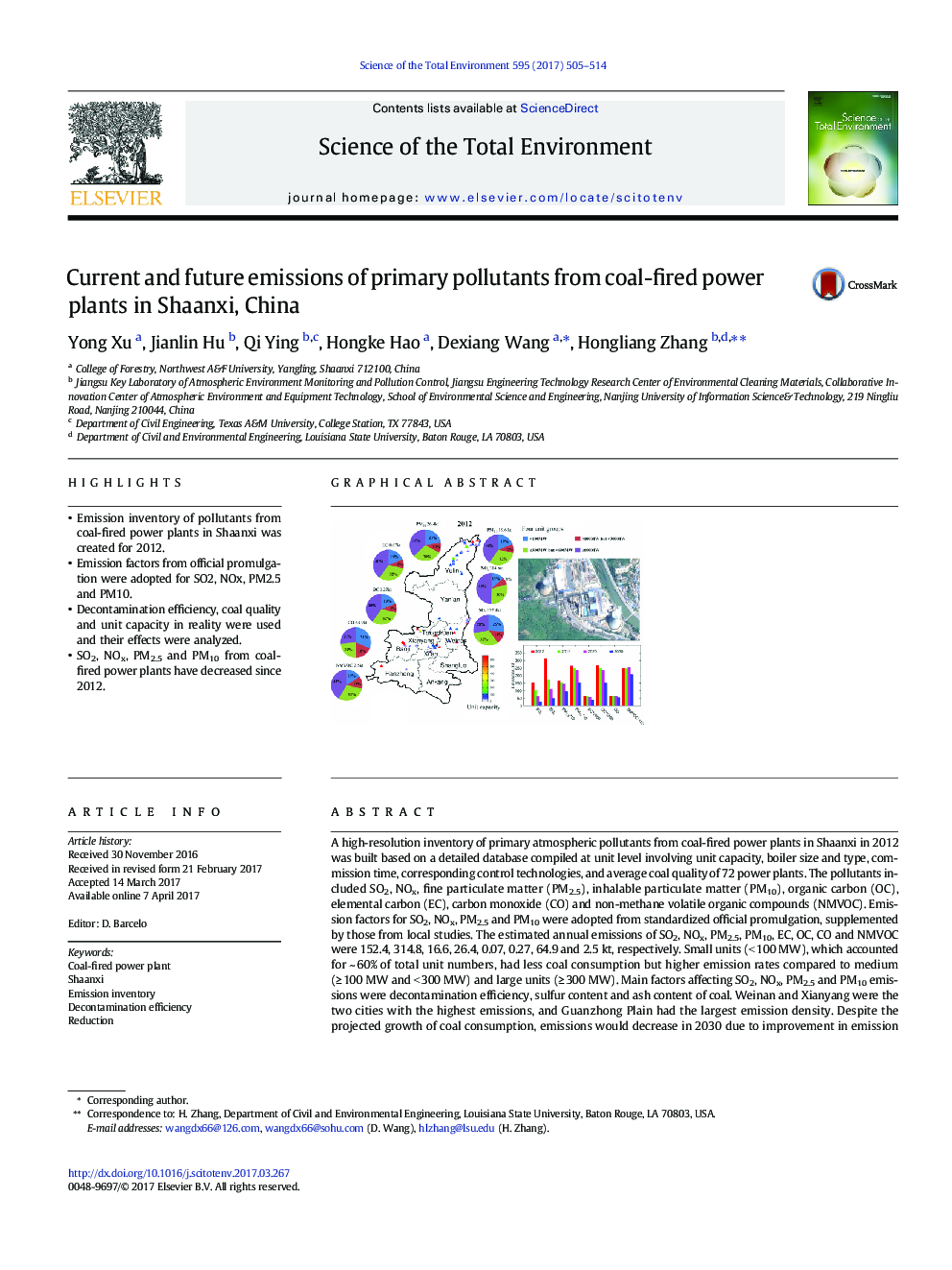| Article ID | Journal | Published Year | Pages | File Type |
|---|---|---|---|---|
| 5751304 | Science of The Total Environment | 2017 | 10 Pages |
â¢Emission inventory of pollutants from coal-fired power plants in Shaanxi was created for 2012.â¢Emission factors from official promulgation were adopted for SO2, NOx, PM2.5 and PM10.â¢Decontamination efficiency, coal quality and unit capacity in reality were used and their effects were analyzed.â¢SO2, NOx, PM2.5 and PM10 from coal-fired power plants have decreased since 2012.
A high-resolution inventory of primary atmospheric pollutants from coal-fired power plants in Shaanxi in 2012 was built based on a detailed database compiled at unit level involving unit capacity, boiler size and type, commission time, corresponding control technologies, and average coal quality of 72 power plants. The pollutants included SO2, NOx, fine particulate matter (PM2.5), inhalable particulate matter (PM10), organic carbon (OC), elemental carbon (EC), carbon monoxide (CO) and non-methane volatile organic compounds (NMVOC). Emission factors for SO2, NOx, PM2.5 and PM10 were adopted from standardized official promulgation, supplemented by those from local studies. The estimated annual emissions of SO2, NOx, PM2.5, PM10, EC, OC, CO and NMVOC were 152.4, 314.8, 16.6, 26.4, 0.07, 0.27, 64.9 and 2.5 kt, respectively. Small units (< 100 MW), which accounted for ~ 60% of total unit numbers, had less coal consumption but higher emission rates compared to medium (â¥Â 100 MW and < 300 MW) and large units (â¥Â 300 MW). Main factors affecting SO2, NOx, PM2.5 and PM10 emissions were decontamination efficiency, sulfur content and ash content of coal. Weinan and Xianyang were the two cities with the highest emissions, and Guanzhong Plain had the largest emission density. Despite the projected growth of coal consumption, emissions would decrease in 2030 due to improvement in emission control technologies and combustion efficiencies. SO2 and NOx emissions would experience significant reduction by ~ 81% and ~ 84%, respectively. PM2.5, PM10, EC and OC would be decreased by ~ 43% and CO and NMVOC would be reduced by ~ 16%.
Graphical abstractDownload high-res image (280KB)Download full-size image
